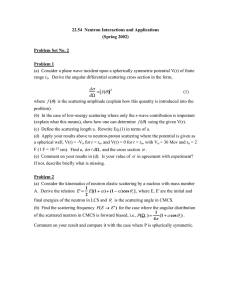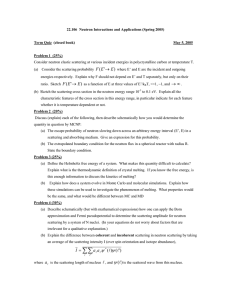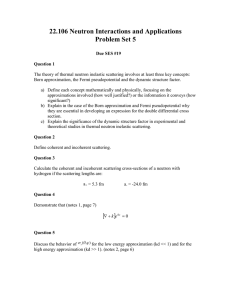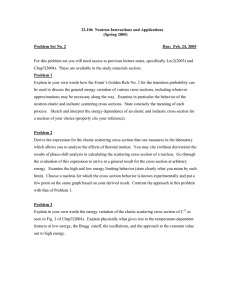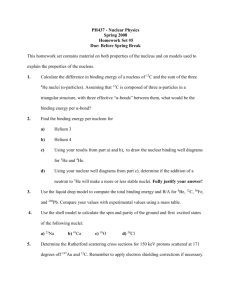22.106 Neutron Interactions and Applications (Spring 2005) Problem Set No. 3
advertisement
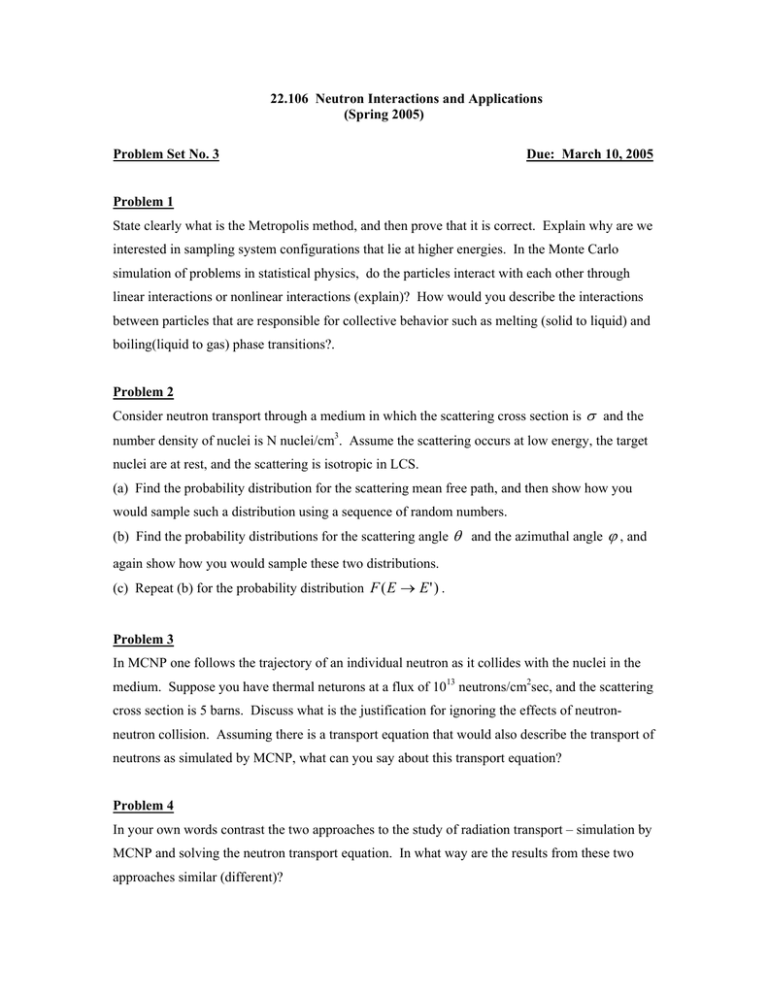
22.106 Neutron Interactions and Applications (Spring 2005) Problem Set No. 3 Due: March 10, 2005 Problem 1 State clearly what is the Metropolis method, and then prove that it is correct. Explain why are we interested in sampling system configurations that lie at higher energies. In the Monte Carlo simulation of problems in statistical physics, do the particles interact with each other through linear interactions or nonlinear interactions (explain)? How would you describe the interactions between particles that are responsible for collective behavior such as melting (solid to liquid) and boiling(liquid to gas) phase transitions?. Problem 2 Consider neutron transport through a medium in which the scattering cross section is σ and the number density of nuclei is N nuclei/cm3. Assume the scattering occurs at low energy, the target nuclei are at rest, and the scattering is isotropic in LCS. (a) Find the probability distribution for the scattering mean free path, and then show how you would sample such a distribution using a sequence of random numbers. (b) Find the probability distributions for the scattering angle θ and the azimuthal angle ϕ , and again show how you would sample these two distributions. (c) Repeat (b) for the probability distribution F ( E → E') . Problem 3 In MCNP one follows the trajectory of an individual neutron as it collides with the nuclei in the medium. Suppose you have thermal neturons at a flux of 1013 neutrons/cm2sec, and the scattering cross section is 5 barns. Discuss what is the justification for ignoring the effects of neutronneutron collision. Assuming there is a transport equation that would also describe the transport of neutrons as simulated by MCNP, what can you say about this transport equation? Problem 4 In your own words contrast the two approaches to the study of radiation transport – simulation by MCNP and solving the neutron transport equation. In what way are the results from these two approaches similar (different)?





